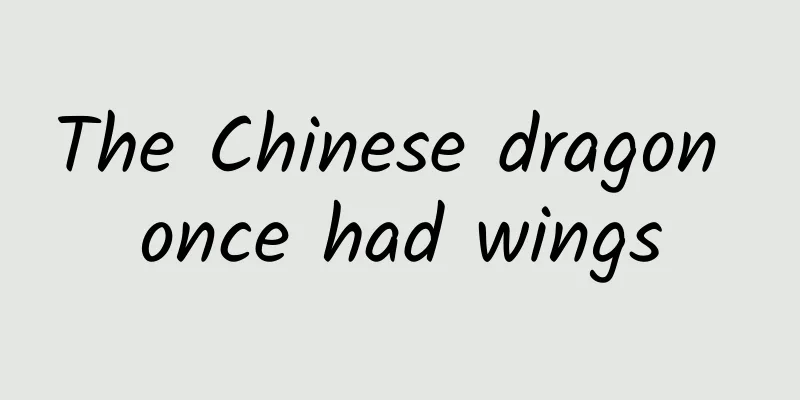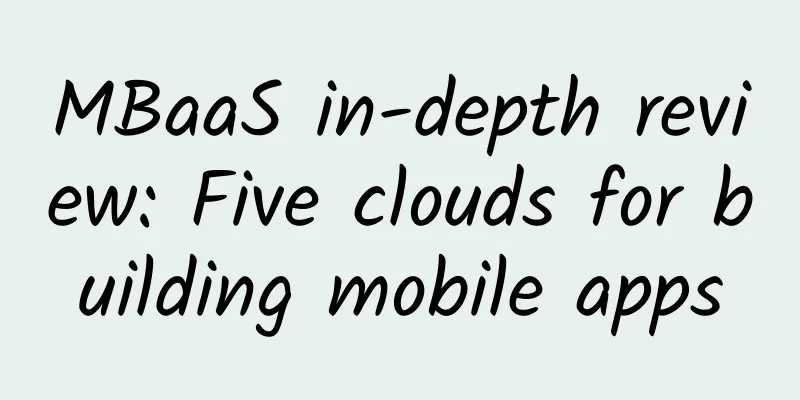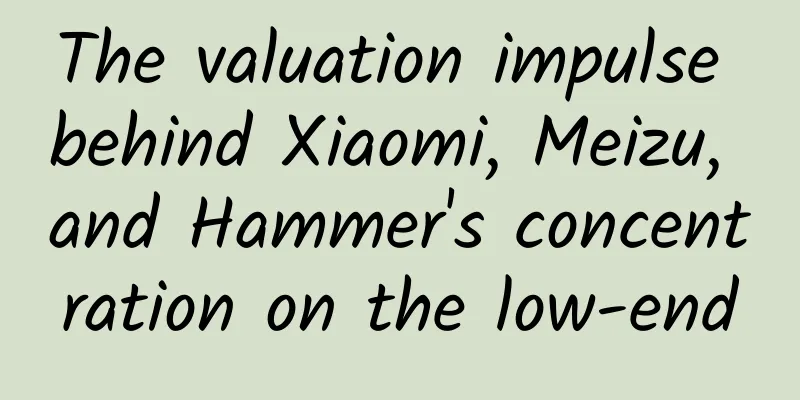The Chinese dragon once had wings

|
"Cloud Dragon", by Chen Rong, Song Dynasty Leviathan Press: In stark contrast to the lofty status of the Eastern dragon, which has been deified, the Western dragon has long been notorious for being a miser and a violent monster. In recent years, there are many scholars who suggest that "loong" should be used instead of "dragon" as the English translation of the Chinese dragon. In fact, this is not without reason. Some scholars have studied that as early as in "The Travels of Marco Polo" published in 1299, the author had already called the dragon totem decorated in the Yuan Dynasty palace "dragon". Although the two are highly similar fantasy creatures, this translation is as confusing as translating Roujiamo as "hamburger". How can a hamburger be as delicious as a roujiamo? The ancients firmly believed in the existence of dragons, just as they rarely doubted the reality of gods, demons, ghosts, and reincarnation. The Chinese dragon totem worship can be traced back to the Xinglongwa culture 8,000 years ago (the Neolithic Age, yes, it was that early). The stone sculpture of a dragon found in the site is 19.7 meters long and is considered to be the earliest dragon image discovered so far (see the picture below). This dragon may still be a bit abstract. However, the jade dragon (pictured below), "China's first dragon" unearthed from the Hongshan cultural site in 1971, is curled up in a ring, dark green in color, with fine spindle-shaped eyes and a fluttering mane, which is somewhat close to the "dragon" known to modern people. © National Museum of China As a traditional fantasy creature, the dragon has carried people's endless imagination for thousands of years. However, the more powerful the power represented by the dragon, the more willing the ancient rulers were to use the dragon to declare their imperial power. Therefore, the image of the dragon has long been associated with the rulers. If we want to talk about dragons, we can't avoid this group of people. For example, the title of Qin Shi Huang "Zu Long" created a precedent for emperors of all dynasties to be called "True Dragon Son of Heaven". Emperor Gaozu of Han, Liu Bang, also included his mother - "Records of the Grand Historian" describes Liu Bang as the result of the union of his mother Liu Ao and a dragon, so he had a "dragon face". There was also Emperor Gaozu of Song, who was seen by a monk with a "five-colored dragon seal" on his body while he was sleeping. When Emperor Taizong of Tang was born, it was said that two dragons played around near his home for three days before leaving. Even in the 11th century Japanese history book "Fuso Ryukki", there is a record that someone saw a dragon when Emperor Uda ascended the throne: "When he ascended the throne, a yellow dragon soared into the sky from Mount Ganjiao." Some scholars have calculated that from the Han Dynasty to the Ming Dynasty, there were 20 regimes that included "dragon" in their era names. But in terms of establishing a relationship with the dragon, these emperors were just elementary school students who came later. According to legend, after the Yellow Emperor cast the large tripod in Dinghu, Jingshan, he ascended to heaven on a dragon that descended from the sky. Then there was the term "dragon goes to Dinghu", which specifically refers to the death of an emperor. The eighth great-great-grandson of Huangdi and an old friend of compulsory education, Dayu, was even more amazing. The Classic of Mountains and Seas recorded Dayu's birth in this way: Dayu's father Gun was punished by Emperor Yao for failing to control floods, and his body did not decay for three years. A brave man cut open Gun's stomach to find out what was inside, and Dayu jumped out. And Dayu's father Gun instantly turned into a yellow dragon and flew away. Gun died, but his flesh remained intact for three years. When he was cut open with a Wu knife, it turned into a yellow dragon. ——Classic of Mountains and Seas: Classic of the Seas Although he was the ancestor of the Chinese nation and the master of Caesarean section and parthenogenesis in ancient mythology, Dayu had to continue his father's work of controlling floods. This also gave Dayu and the dragon another story to tell. There is a sentence in Chuci when writing about Dayu's flood control: "How is Yinglong drawn? How are the rivers and seas?" Wang Yi, a writer in the Eastern Han Dynasty, commented on this sentence: "Some say that when Dayu was controlling the flood, a divine dragon drew a line on the ground with its tail, directing the water to where it should flow, and thus controlling the flood." That is to say, when Dayu was controlling the flood, Yinglong was in front of him, swinging his tail to carve out gullies on the ground to help drain the water. A true hero. What is the origin of Yinglong who helped Dayu control floods? The Southern Dynasties’ Records of Strange Things records that “a water snake turns into a Jiao after 500 years, a Jiao turns into a dragon after 1,000 years, a dragon turns into a Horned Dragon after 500 years, and a Yinglong after 1,000 years. ” The Guangya of the Three Kingdoms period says that “a dragon with scales is called a Jiaolong, a dragon with wings is called a Yinglong , a dragon with horns is called a Qiulong, and a dragon without horns is called a Chilong.” From this we can see that Yinglong is the final form of the dragon as a "species" after thousands of years of growth, and it has wings. There are many descriptions of Yinglong in ancient books. Let's look at the size first. The Ruan Ji Collection of the Three Kingdoms said that Yinglong was "not a regular dragon" . When it was big, it could "stretch its body" so that the universe could not contain it, and when it was small, it could "shrink its body" so that it could fit in the void. It can be bigger than the biggest and smaller than the smallest. If you stretch your body, the eight dimensions will not be able to move freely; if you restrain your body, you will be able to feel relaxed without any gaps. ——Collected Works of Ruan Ji Let's look at the skills. The Complete Library of the Four Branches of Literature records that Yinglong has the ability to create the world , "The heaven and earth are shattered and the original energy is annihilated... Yinglong soars up to support the sky, and hangs down clouds to straighten his wings and clear the air"; The Qiantang Collection says that Yinglong has the destructive power to destroy all things , "Yinglong heard it... The bright sun turned into darkness. The heaven and earth were dark and all things were destroyed. Destruction means destruction." Next, let’s list the generations. In terms of species, Yinglong is the origin of auspicious animals such as Qilin and Phoenix, as shown in Huainanzi: “Mao Du gave birth to Yinglong, Yinglong gave birth to Jianma, Jianma gave birth to Qilin, Yujia gave birth to Feilong, and Feilong gave birth to Fenghuang.” Phoenix is the beginning of flying birds, Qilin is the leader of walking beasts, so Yinglong has become the common ancestor of all flying birds and walking beasts. Creating the world, making things, and destroying the world, Yinglong almost exhausted the ancient people's imagination of mysterious powers. The mural "Four Gods and Clouds" from the Western Han Dynasty is now in the collection of the Henan Museum. The image of Yinglong with wings can be clearly seen. © public Helping Dayu to achieve the KPI of flood control was not the first time Yinglong appeared. In the era of Fuxi, Yinglong first came down to earth to present the "Hetu" to Fuxi, inspiring the latter to invent the Eight Trigrams. During the Yellow Emperor's time, Yinglong was born again and assisted the Yellow Emperor in killing Chiyou and beheading Kuafu. As a result, he could no longer return to heaven and retreated to the south, which is why it rains a lot in the south. Zhang Guo Xing Zong, a work of astrology written in the Ming Dynasty, even said that "if there are auxiliary wings, it is a real dragon", which shows how high the status of Yinglong is. Yinglong had killed Chiyou and Kuafu, so he went to the south and lived there, which is why there is more rain in the south. ——Classic of Mountains and Seas Different from the inherent impression of dragons by most modern people, the winged Yinglong has always been the main style of dragon totem, from bronze ware in the Shang and Zhou dynasties to stone carvings, silk paintings and lacquerware in the Han Dynasty. In 1916, when Yuan Shikai was preparing for the Hongxian Empire, he also issued a silver coin with Yinglong pattern (see the picture below). In the long evolution of dragon totems, the image of Yinglong with wings has dominated the mainstream for quite a long time. The appearance of the oriental dragon that we are familiar with began to appear in large numbers from the Tang and Song dynasties. At this time, the dragon totem as a symbol of imperial power often lost its wings and evolved into the wingless, long snake shape that we are familiar with. By the Yuan Dynasty, the dragon's significance as a symbol of imperial power was further deepened: the four-clawed dragon was the limit for the nobility, while the "real dragon" with two horns and five claws was the exclusive property of the emperor. The emperors of the Qing Dynasty not only wore dragon robes and sat on dragon thrones, but also printed dragons on the national flag, which was a first for the emperors. According to scholar Chen Zheng's speculation in his article "Yinglong - The Origin of the True Dragon Image", Yinglong's wings did not actually disappear during this evolutionary process, but gradually turned into flames and cloud patterns lingering around the dragon's body. The Eastern Dragon once had wings. There have been many speculations in academia about the origin of the dragon image. Mr. Wen Yiduo believed that the wars and mutual integrations between ancient tribes caused "the snake totem to annex and assimilate many weak units", and finally mixed out the prototype of the dragon totem. This is the snake origin hypothesis of the dragon totem. On the other hand, some scholars regard the twists and turns of lightning and the devastation of tornadoes as the main basis for the belief that dragons originated from astronomical worship . Some people also believe that the image of the dragon originated from the ancient people's understanding of insects , which can both pupate and hide underground, and then fly into the sky. Although they are small in size, they have great magical powers. What's more, in ancient Chinese characters, "dragon" and "insect" have similar pronunciations. Therefore, even if there are dragons like Yinglong who have performed divine acts against the will of heaven, early dragons still retain some animal attributes. For example, the "Historical Records" once recorded the story of Duke Wen of Qin who went out hunting and accidentally "captured a black dragon" and regarded this as a good omen. According to the Zuo Zhuan, during the reign of Emperor Shun, there was even an official position called the Huanlong Clan, who was responsible for raising and taming dragons . When this sect was passed down to the Xia Dynasty, a student named Liu Lei ruined the sect's reputation by chopping up a dragon that had died of negligence and falsely claiming it was high-quality seafood and giving it to Emperor Kongjia of the Xia Dynasty to eat. When Kong Jia ate it, he found it so delicious that he asked Liu Lei to send it to him every day. This frightened the guy so much that he had to pack up and run away overnight. The eating of dragon meat also happened during the reign of Emperor Huizong of Song. In the summer of 1119, a dragon was stranded in a teahouse in the capital of Bianliang (now Kaifeng), and was killed and eaten by nearby soldiers. Soon after, the capital was flooded, causing countless deaths and injuries. Some people speculated that it was a punishment from heaven for eating dragon meat. Dragons also appeared as a labor force in ancient times. The brick reliefs of the Han, Wei and Jin Dynasties often have images of dragon carts. At that time, the people riding on dragon carts were at least gods (such as the Queen Mother of the West) and ancient wise kings (such as King Mu of Zhou and the Yellow Emperor). When Wu Chengen began to write novels, dragons not only had to carry monks through mountains and rivers, but also had to be pulled out and skinned by children in bellybands. How miserable. The Han Dynasty dragon-riding thunder chariot brick painting confirms the animal nature of the dragon from the side. The wheel is painted in a spiral shape, which is regarded as a symbol of the thunder god, and there are five stars shining around it. It is now in the collection of Sichuan Museum. This shows that the dragon was not always out of reach in the minds of the ancients. On the one hand, it was respectable and fearsome, and on the other hand, it could be killed, driven away, and eaten. In fact, it is not only the ancient Chinese who have contradictory feelings towards the Eastern dragon, praising and criticizing it at the same time. The same is true for Westerners towards their dragons, whose typical image is often a dragon with wings and the ability to breathe fire. To this day, the flag of Wales still has a red dragon printed on it (pictured below), representing the people of King Arthur's family. King Arthur's father, King Uther, who is well known in Europe, was named Uther Pendragon, whose surname means "like a dragon." This shows that Europeans also use dragons to represent royal power. © wiki However, unlike the generally positive image of Eastern dragons, the image of dragons in the West has always been relatively negative : burning houses, seizing cities and plundering treasures, abducting princesses, and tearing heroes apart with their claws. This is the image of a greedy and evil dragon. Positive images of Western dragons are rare. For example, the poisonous dragon Nidhogg (literally meaning "despair") in Norse mythology is said to bite off the giant root of the cosmic tree when the Ragnarok comes, ending the world. Or the evil dragon Fafnir, who was transformed from a dwarf, was cursed for greed for treasure, killed his father and expelled his brother, and was finally killed by the hero Siegfried. A 17th-century Icelandic manuscript (AM 738 4) showing Nidhogg gnawing at the roots of the Cosmic Tree. © wiki The oldest recorded legend in the UK is called "Beowulf", which tells the story of the hero Beowulf fighting a dragon and eventually perishing with the dragon. Fantasy writer J.R.R. Tolkien once revealed that the story of "The Lord of the Rings" was inspired by it. Saint George and the Dragon, Paolo Uccello, 1470. © public But the most famous dragon slayer is probably the Christian saint St. George. He heard that there was a dragon in a lake somewhere, and threatened the locals to cut off the water supply and offer him a young girl every day, so he stepped forward to fight the dragon. According to legend, in order to resist the attack of the dragon, he drew a cross on his shield with dragon blood, which is also the origin of the English flag. St. George finally stabbed the dragon to death with his spear, and countless roses grew on the ground covered with his blood. People were grateful for what he did and followed his baptism and converted to Christianity. The Western dragon depicted in the medieval manuscript "MS Harley 3244" around 1260 is the image that is closest to the modern Western dragon that can be found. © public In the West, the role of dragons is often to represent heroes and stand on the opposite side of justice. The evil image of dragons in the West was deeply rooted and notorious in the Middle Ages, which was actually closely related to the widespread spread of Christianity at that time. The New Testament Revelation regards dragons as the incarnation of the devil Satan, and accuses dragons of "original sin." But unlike the Eastern dragon, the emergence of the Western dragon totem does not have a clear thread. This is related to the fact that Western culture inherited from many sources such as West Asia, North Africa, Western Europe and ancient Egypt, and these cultures more or less have their own dragon legends. Mušḫuššu in Mesopotamian mythology, Apep in Egyptian mythology, Nāga in Indian mythology, and Leviathan in the Hebrew Bible have all played an important role in shaping the modern Western image of the dragon. Medieval scholars believed that dragons and elephants were archenemies. © Harley MS3244, folio f.39v, British Library The mainstream view is that the origin of dragons in the West is the fear and worship of snakes. The Latin root of the English word "Dragon" is "draco", which originally means "huge snake". Anthropologist David E. Jones proposed in his book "Dragon Instinct" that humans, like other primates, have an innate fear of snakes, large cats, and birds of prey, which were also the main predators of our primate ancestors. This is why there are legends of dragons or other snake-like creatures all over the world. From a modern perspective, the ancients' understanding of the world would naturally be greatly limited. However, modern people are well aware of the principles of flowers blooming and withering, insects turning into butterflies, and the movement of stars, so they have naturally lost their unique charm. On the other hand, the ancients, due to their limited cognitive perspective, gave birth to a unique romance. A lunar eclipse is not the routine movement of celestial bodies, but a rebellion by the heavenly dog who is afraid of the sound of the gong; the rumbling sound of thunder is not the rapid friction and collision of gas molecules, but bursts of low dragon roars; when two people are in love, it is the matchmaker who brings them together, and the gods reside on the top of the rolling sea of clouds. In a naive cognitive perspective, humans are both extremely small and extremely great. Strictly speaking, to prove the existence of something, we only need to find a solid example - and to prove that something does not exist is theoretically impossible. From this perspective, the charm of all fantasy things, including dragons, comes from their undispellable characteristics to some extent. Therefore, dragons are immortal. Compared to the hideous-looking Western dragon, the Chinese dragon embodies the origins of the Chinese nation over thousands of years and carries the hopes of generations for auspiciousness, prosperity and beauty. When the warm monsoon from the East China Sea brings abundance to the North China Plain, and when the melted snow from the Kunlun Mountains returns vastness to civilization, our ancestors have lived and worked on this land for generations. The cultural heritage of thousands of years is not just a few words in ancient books, but has the power to connect eternal bloodlines. Strong, brave, powerful, and civilized. As a consistent cultural totem of the Chinese nation, the dragon has transcended both time and space, and today has become a spiritual bond that connects Chinese people all over the world. Since you already have the potential to fly, why bother about having wings or not? Text/Santong Proofreading/Shui Yan This article is based on the Creative Commons License (BY-NC) and is published by Santong on Leviathan The article only reflects the author's views and does not necessarily represent the position of Leviathan |
<<: This chemical has been banned for decades, but it still endangers the lives of killer whales
>>: Is the pork stamp special? Can it be washed off once it is stamped?
Recommend
"Highly Disseminated" Fission Poster Design Routine
Visual aesthetics is prevalent nowadays, and visu...
A lifeline for the video industry caught in the IP vortex?
April 10 (Reporter Zhang Zhichang) Under the guid...
Did you accidentally eat bitter melon seeds during the Chinese New Year? Don’t hesitate! Spit them out immediately!
Review expert: Wang Xuejiang, professor at Capita...
SUV sales hit a 7-year low, electric SUV may be the best tool to break the deadlock
In the past few years, the SUV market has grown r...
Should companies develop WeChat mini-programs?
Should companies develop WeChat mini-programs? Do...
Good products do not mean good sales. Sony TV has been losing money for ten years.
Whenever Sony is mentioned, its fans always assoc...
You bump into it and you say "ouch", it bumps into it and you say 130 billion
END Tadpole's original work, please indicate ...
Electric Technology Car News: With the increasing homogeneity of hard-core off-road vehicles, can the Patrol compete with the Prado with a unique price cut?
When it comes to Japanese hard-core off-road vehi...
The college entrance examination is over, don’t do these 6 things to your children!
The intensive college entrance examination is fin...
In the metaverse, will robots become humans?
At present, human technology is developing rapidl...
Why are these sunglasses glare-proof?
As office workers, driving is our common way of t...
Why are 1 to 0 read as “一两三四五六拐怕勾洞”?
When watching war movies, you must have heard the...
The Xiaomi Mi 5S is not the right medicine for the right condition.
In recent times, Xiaomi has been plagued by negat...
Analysis of Douyin live streaming marketing cases!
Luo Yonghao was on the hot search again before, a...









